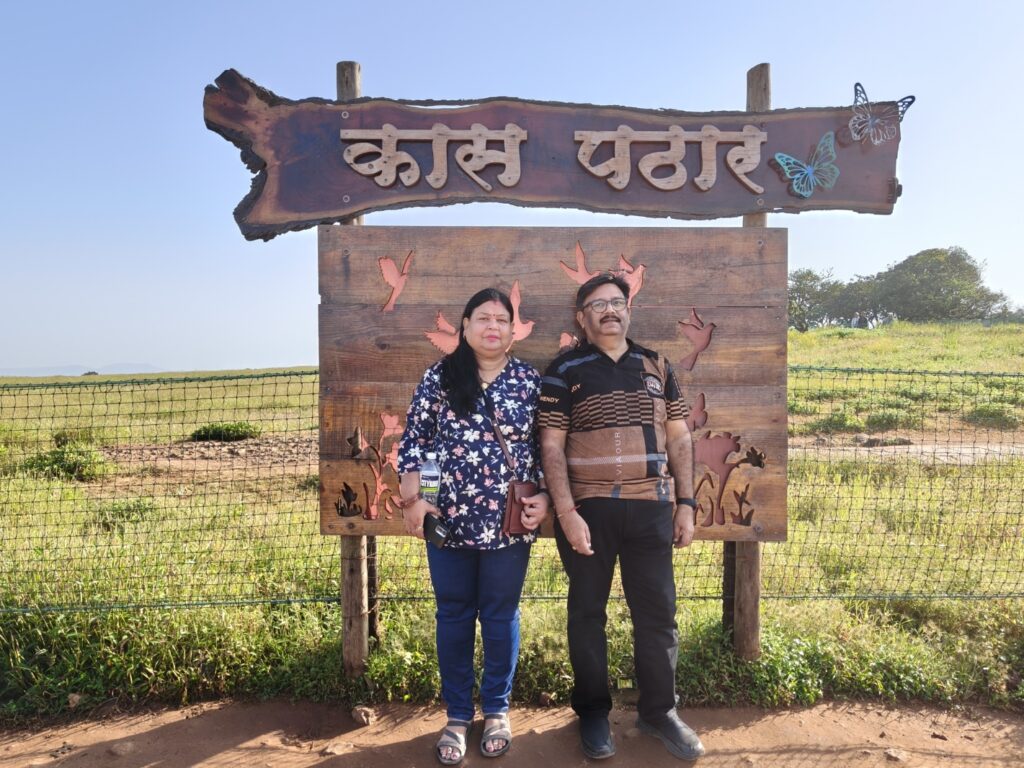Table of Contents
ToggleKaas Plateau or Kaas Pathar: Valley of Flowers

Kaas Plateau, also known as Kaas Pathar or the “Valley of Flowers of Maharashtra,” is a breathtaking biodiversity hotspot nestled in the Sahyadri sub-cluster of the Western Ghats, about 25 kilometers west of Satara city in Maharashtra, India. Spanning around 10 square kilometers at an altitude of 1,200 meters, this volcanic basalt plateau transforms into a vibrant carpet of wildflowers during the monsoon season, drawing nature enthusiasts, photographers, and botanists from around the world.
History of Kaas Plateau
The story of Kaas Plateau begins millions of years ago with intense volcanic activity that shaped the Deccan Traps, where lava flows solidified into the black basalt rocks that form its foundation. Over time, erosion created a thin, acidic soil layer (just 25 mm thick in places) atop laterite rock, fostering a unique ecosystem of ephemeral wetlands and rocky outcrops. This geological drama dates back to the Cretaceous period, making the plateau a living testament to ancient volcanic forces.
Human interaction with the plateau adds cultural depth. The name “Kaas” may derive from the Kaasa tree in surrounding forests or from a regional word for “lake,” referencing a prominent water body on the site. For centuries, indigenous tribal communities have revered it as a sacred space, weaving it into folklore as a symbol of renewal and prosperity. Traditional rituals celebrate the seasonal blooms, while elders pass down knowledge of medicinal plants used for remedies. The earliest scientific documentation came in 1973 with studies on its flora, followed by key research in the 2000s on endemic species and pollination. Kaas Lake, built about 100 years ago, provides perennial water to western Satara via gravity.
Conservation efforts ramped up in the early 21st century amid threats like grazing, burning, and tourism pressure. By 2012, it earned UNESCO World Natural Heritage status as part of the Western Ghats, leading to regulated ecotourism, waste management, and community involvement through Joint Forest Management Committees to safeguard its fragile habitats.
Importance of Kaas Plateau
Kaas Plateau’s significance lies in its role as a global biodiversity treasure trove, representing threatened lateritic plateau ecosystems under IUCN Category IV protection. It’s a hotspot for endemism, hosting over 850 flowering plant species—many rare, endangered, or unique to the region—including 39 documented only here and 624 in India’s Red Data Book. This diversity supports complex ecological interactions, like pollination by endemic insects and nutrient cycling in its seasonal wetlands.
As part of the UNESCO-listed Western Ghats (criteria ix and x for evolutionary processes and biodiversity), it aids scientific research on climate resilience, with studies on microfossils, aquatic insects, and herpetofauna revealing adaptations to extreme conditions (from 45°C summers to 5°C winters). Economically, sustainable tourism boosts local livelihoods while educating visitors on conservation. Ecologically, it preserves genetic resources for medicine and agriculture, with tribal knowledge enhancing global efforts against biodiversity loss.
Amazing Facts About Kaas Plateau
Monsoon Magic: From August to early October, over 150 flower species explode in a kaleidoscope of colors—yellow Eriocaulon, pink Impatiens lawii, blue Utricularia, and purple Karvi—creating a “living painting” that lasts just 3–4 weeks, with some blooming en masse like the Mickey Mouse-shaped Smithia hirsuta.
Carnivorous Curiosities: Home to pitcher plants and sundews like Drosera burmannii (Gavati Davbindu), which trap insects in sticky mucilage, showcasing nature’s predatory side in this flower-filled haven.
Butterfly Bonanza: Over 200 bird species (including the endemic Malabar Lark) and 57 reptiles thrive here, but it’s the endemic butterflies and tiger beetles that steal the show, with mating swarms visible in September–October.
Visitor Limits for Protection: Only 3,000 people per day in timed slots (7–11 AM, 11 AM–3 PM, 3–6 PM) to prevent trampling—book via the official site to avoid missing this eco-sensitive wonder.
Hidden Gems Nearby: Relax by Kaas Lake, hike to Thoseghar Waterfall (one of Maharashtra’s tallest, roaring in monsoon), or explore historic forts like Ajinkyatara and Sajjangad for panoramic views and saintly lore.
Scientific Stars: It’s the type locality for species like the toothbrush orchid (Habenaria heyneana) and rediscovered rarities like Crinum brachynema, with lichen diversity (20 species) hinting at ancient microbial secrets.
Whether you’re chasing blooms or biodiversity, Kaas Plateau reminds us of nature’s fragile artistry—plan a monsoon visit to witness it unfold!